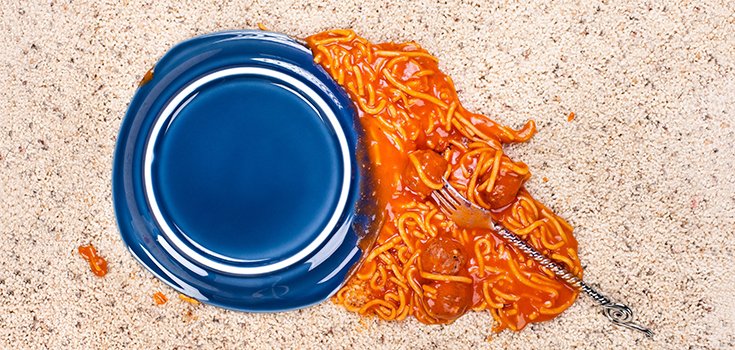How True is the ‘5 Second Rule’ When You Drop Food on the Floor?

We’ve all heard it before: if you drop food on the floor, you have 5 seconds to pick it up and eat it. The idea behind this is that it takes 5 seconds for the bacteria to make its way to the food and invade, but a new study suggests that this old wives’ tale is mostly untrue.
Scientists at Rutgers University have conducted a 2-year study on the old adage, and have found that no matter how quickly you pick up food after a spill, bacteria will still catch a ride with it. Some credence was given to the “rule” a few years ago when Aston University’s School of Life and Health Sciences in the United Kingdom’s study found that bacteria was less likely to find its way onto your food the less time it spent on the floor. But that may not necessarily be the case.
Professor Donald Schaffner, lead author and extension specialist in food science said of the outdated idea:
“The popular notion of the ‘five-second rule’ is that food dropped on the floor, but picked up quickly, is safe to eat because bacteria need time to transfer.” [1]
Read: Watchdog Report: FDA Too Slow in Recalling Contaminated Food
Though what this study suggests is that while the time your food has spent on the floor doesn’t affect the amount of bacteria transferred, the type of food you drop actually does.
What Food Did You Drop?
Scientists conducted the experiment by dropping watermelon, bread, bread and butter, and gummy candy on stainless steel, ceramic tiles, wood, and carpet. The surfaces were covered with a bacteria similar to salmonella. The food was dropped several times on the different surfaces, each time for a little bit longer:
- Less than 1 second
- 5 seconds
- 30 seconds
- 300 seconds.
The food was then analyzed for bacteria samples.
After careful analysis, researchers found that the watermelon contained the most bacteria after it had been dropped and gummy candy contained the least. Scientists explain that this is because bacteria moves with water, and since watermelon is mostly water, it allows for a smooth transfer between surfaces. It was also found that food dropped on stainless steel was more likely to carry bacteria than food dropped onto the carpet. [2]
Schaffner said of his results:
“The five-second rule is a significant oversimplification of what actually happens when bacteria transfer from a surface to food. Bacteria can contaminate instantaneously.”
Sources:
[1] The Independent
[2] New York Times
